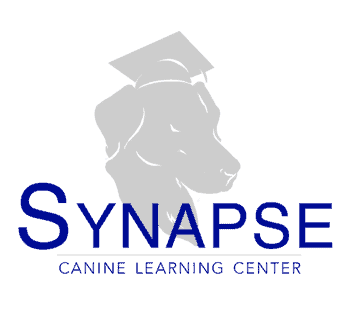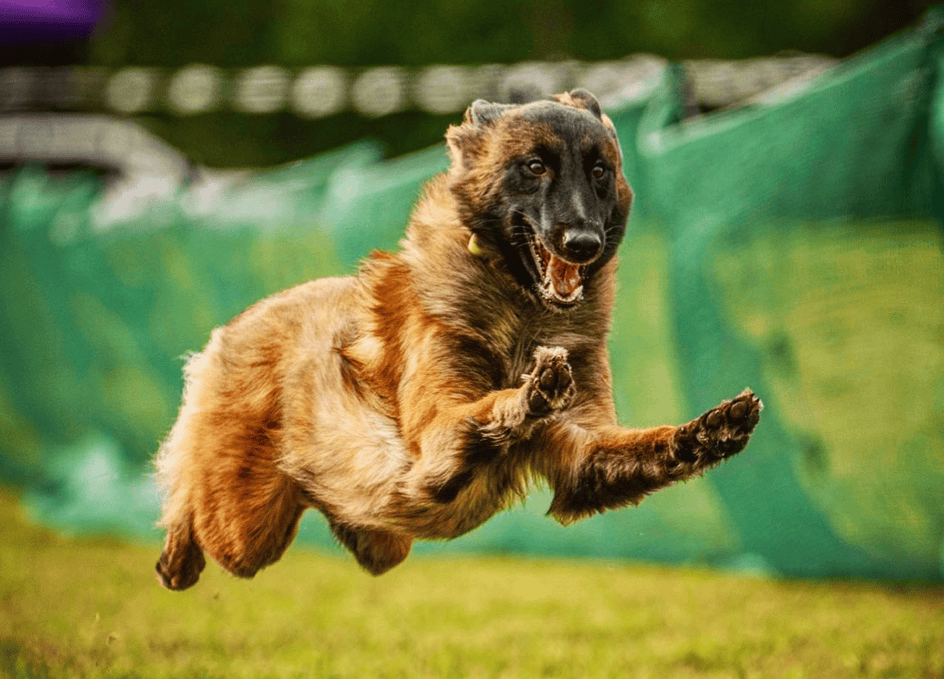If you have an interest in dog sports, you have likely heard of Fast CAT. Fast CAT was developed in 2011, and is based off of lure coursing, which is a sport developed for sight hounds. The CAT stands for “coursing ability test,” and it is meant to be a modified version of standard lure coursing. Originally, Fast CAT was supposed to be a very simple sport, where dogs would compete on a pass/fail basis. This was because most breeds cannot compete with the speed of sighthounds, so a pass/fail would have made the event fairer.
The issue was that there was little competition with a pass/fail sport and although public interest was high, competitors wanted a way to objectively score their dog’s performance. This is when Doug Ljungren – one of the sport’s founders, decided that timing runs would be the optimal way to measure performance. This decision inspired the foundation of modern day Fast CAT as a contest of speed.
How does Fast CAT work?
Since comparing the run times of a Greyhound and a Basset Hound would be unfair due to their significant physiological differences, Fast CAT scores are modified by a concept called “handicaps.” Handicaps are based on the height of a dog, and can add points to runs for shorter dogs, who often naturally run slower than larger dogs.
This system is not perfect, however, as there are still significant run time differences between breeds of relative size (e.g. the Whippet and the Chow Chow). To mediate this, Fast CAT event staff score each run, and then rank by size and breed group.
The layout of a Fast CAT course is significantly different than what you will see in standard lure coursing. There is still a lure, but it runs down a straight 100 yard (300 feet) path. A releaser stands at one end of the course holding the dog back until they are told to release them. At the other end, a catcher (typically the dog’s handler) will await the dog entering the catch pen. In between the catcher and releaser, the dog will chase the lure as fast as they can until they hit the other side. These runs are timed and recorded, and points are recorded based on how many seconds the run was, which equates to how many miles per hour the dog was running.
If a dog runs in three or more Fast CAT events over one year, their top three runs are averaged and ranked. The AKC then publishes a list of the fastest dogs for each breed and how many MPH each dog can run.
What is the AKC Fast CAT Invitational?
Each year, the AKC holds the Fast CAT Invitational. The Invitational is by invite only and recruits the top five dogs of each breed to represent their breed at the event. The Invitational occurs over several days, and each dog runs twice. These two runs occur on consecutive days at a specified time. After these preliminary runs have been completed, the top two dogs of each breed enter the finals. In the finals, each dog is allowed to run one time. Once the finals have concluded, rosettes are provided to dogs according to three divisions:
- Best of Breed: The fastest dog of their breed.
- Speed of the Breed: Provided to dogs who run over an established average speed of a given breed.
- Pure Speed: Rewarded to the top fastest dogs in MPH at the competition.
How are we preparing for the Invitational?
On August 19th, 2025 we received a very exciting email from the AKC. Akin to when Harry Potter first opened his letter from Hogwarts, I couldn’t contain my elation and surprise after learning that Halo had been invited to the Fast CAT Invitational.

Just as with any other high-level sporting competition, the difference between placements can be miniscule. Because of this, we have been following a diligent conditioning program with Halo over the past several weeks in preparation for this event.
We try to dedicate at least 30-60 minutes most days to fitness boosting activities, and our schedule ensures that the most important activities are accomplished on a rotation. This keeps the program balanced and helps minimize the potential for overtraining or repetitive strain injuries occurring.
We will go into more detail about the types of activities we are rotating and why, but high quality sleep and nutrition are also paramount to ensuring that Halo can run her best at the Invitationals.
Sleep
Multiple studies in humans have demonstrated the significant impact that quality sleep (or lack thereof) has on physical and cognitive performance. This research has expanded to other mammals, including dogs, and the results are finding the same things. Quality sleep is imperative for physical and cognitive health for many reasons; one being that the brain literally cleanses itself during sleep. The glymphatic system is a recently discovered network of channels responsible for removing waste and supplying the brain with glucose, lipids and important neuromodulators. The renewal of the brain which occurs during sleep enables animals to be cognitively sharper, learn better and be more behaviorally stable during the day.
Many other repair and cleansing processes occur during sleep, which means that any musculoskeletal wear from Halo’s exercise and training is repaired during sleep. In order to promote the best quality sleep possible, we are working hard to keep negative stress during the day to a minimum to help decrease the risk of a stress response causing impaired sleep. We try to ensure that in conjunction with her physical training, she is also getting adequate mental stimulation and play throughout the day. At night, she has a comfortable, familiar sleeping spot large enough for her to completely spread out. The room is kept as dark and quiet as possible. Although we are not tracking her sleep quality, we are keeping a log of her training and any observations or progression, which helps to confirm if she is likely receiving adequate sleep.
Nutrition
We feed Halo a high quality, nutritionally balanced fresh diet. Her diet has not changed drastically since preparation for the Invitationals began; however, we are ensuring that she is getting a regular, high-quality fish oil supplement which can help decrease internal inflammation. Anti-inflammatory foods such as fish oil may help improve joint mobility by decreasing inflammatory markers within the joint while also protecting against cartilage loss. We are also feeding a once daily multi-strain probiotic, which has been shown to mitigate performance reductions and muscle tension in the days following exercise. Probiotics have also been shown to improve motivation in human athletes (likely due to their potential impact on neurotransmitter production and processing) while also possibly increasing oxygen consumption – although the results on the latter are mixed.
Halo’s diet currently includes slightly more food than maintenance to help maintain her muscle mass and energy during training. Since she is not running for hours each day, however, we have not been feeding her additional meals, and the increase in total food volume is only about 25-33% per meal. Halo is fed a high-protein, high-energy diet containing other fresh nutritious foods such as a variety of (dog safe) fruits and vegetables.
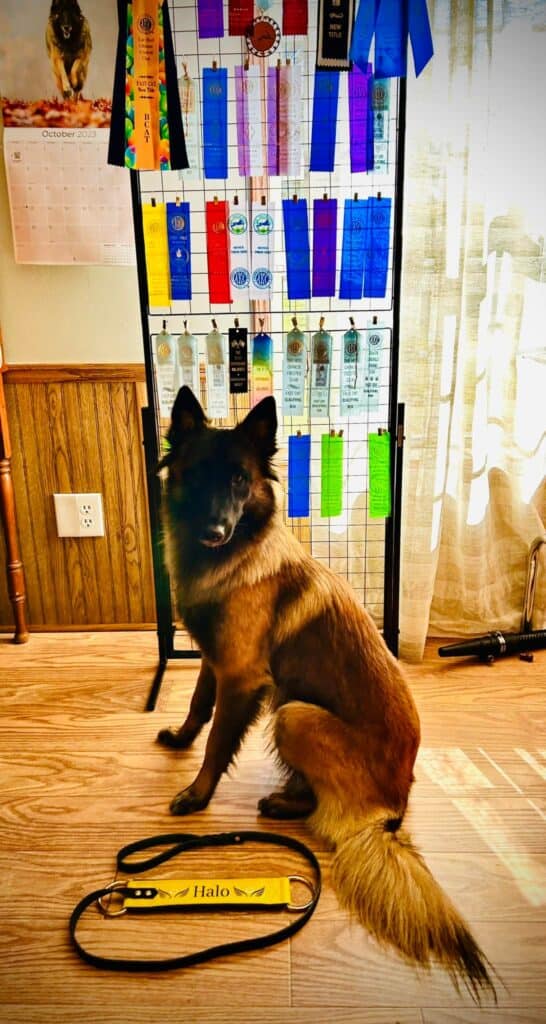
Training Schedule
Our current conditioning schedule consists of:
- Hill sprints. Just like in humans, hill sprints are a valuable tool for building strength in fast-twitch muscle fibers, which help increase explosive power and speed. Hill sprints also have been found to increase an animal’s VO2 max (which is the maximum amount of oxygen one’s body can use during physical exercise) and lung capacity. An increase in oxygen uptake can help the brain and muscles work better during exercise.
- Off-lead walks. Although hill sprints are a fantastic tool for conditioning, they are intense and have a higher risk of injury than some lower impact forms of exercise. Off-lead walks are another great tool for allowing a dog to run as fast as they would like over variable terrain, with more flexibility for the dog to self-moderate their exertion levels. Off-lead walks also have a plethora of additional benefits, such as olfactory enrichment and environmental enrichment. Since we are a multi-dog household, our dogs tend to chase each other around during walks which results in more running than may occur if Halo was to attend one of these walks on her own.
- Agility training. We try to do one solid 30 minute session of agility training each week. During these sessions, we are typically working on agility specific training (such as groundwork, obstacle focus and course specific objectives), but agility is fantastic for building body awareness, coordination, balance, power and speed. Agility requires a significant amount of focus while also striking the balance between independent thinking and handler awareness.
- Bite work. Since Fast CAT is a lure-based sport, bite work is a great way to build the frustration necessary to increase a dog’s drive to pursue and possess a moving target. All of our bite work during this specific training period has been accomplished on a harness and lead, which is not how we typically always practice this. Since Halo is a working line Tervuren and biting sleeves/tugs/suits is probably her favorite activity, the harness and lead are very effective in building the desire to chase and bite these objects. Although Fast CAT lures are not bite suit material, we can replicate aspects of the run such as the tension of being held back, the driving in to chase a moving target and the possession of that target at the end.
- Conditioning work. Two days per week are focused on conditioning specific exercises meant to build muscle strength and stability. By doing activities such as “squatting” to build strength in the back legs and hips, the pulling up of the lower body to build the shoulders and chest, and balancing work to build core stability, we can isolate the areas which may be neglected during more fast paced activities and build them up as well.
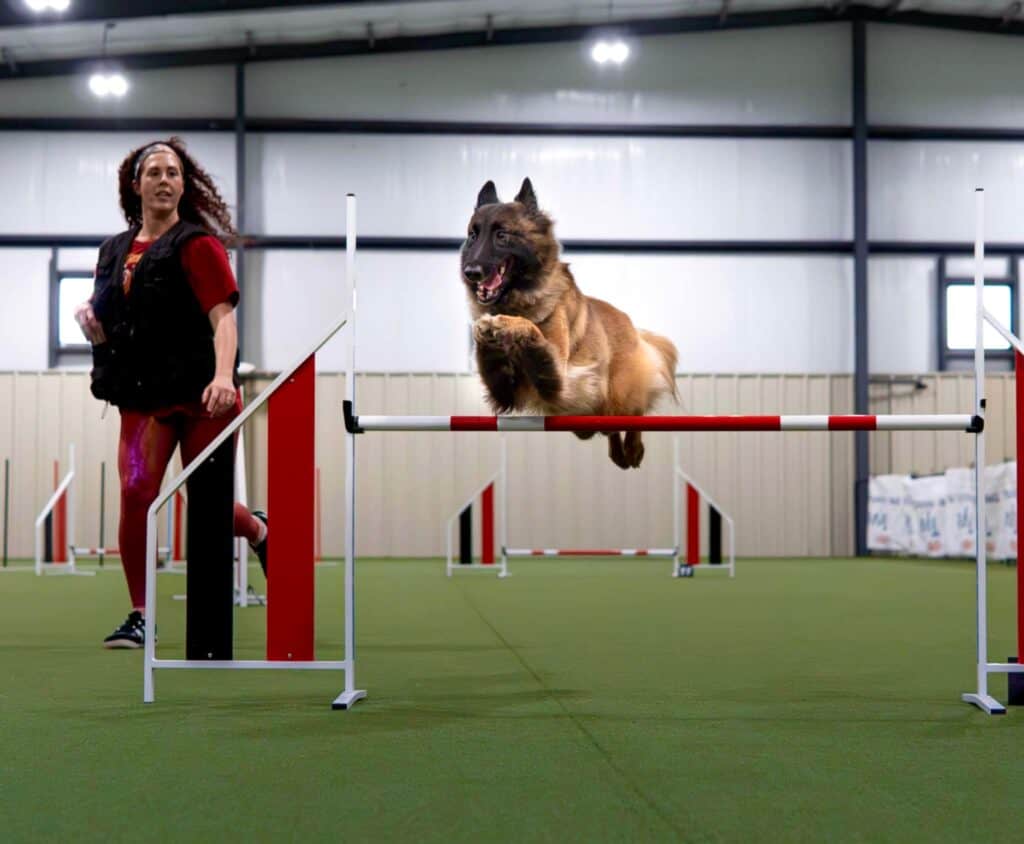
We are also incorporating other types of training not specific to building speed, coordination and motivation.
- Detection. Halo is a detection dog so we have continued her regular detection training.
- Out in public training/socialization sessions. We have slightly increased the regularity of training sessions accomplished in distraction laden environments. This will hopefully help ensure that the chaotic environment of the Fast CAT invitationals is less overwhelming. During these sessions, we will typically work on some obedience, but the purpose is more to maintain environmental stability around new people, dogs and generally novel stimuli.
- Mock Fast CAT runs. Since this is the last week prior to the Invitationals, we will be conducting two mock Fast CAT runs. Since we do not have a lure, the point of these runs is simply to help build the frustration associated with seeing me leave while she remains with the releaser. We will map out 100 yards, and then the frustration of being contained on lead can be channelled into running to me where she will have the opportunity to bite and play with her tug at the end of the run. These mock runs will hopefully help remind her to start running as soon as the tension on her collar disappears once the releaser lets go of her collar.
The Invitational is rapidly approaching, and the AKC has officially released the run times and dates for each dog participating. At 9:00am next Wednesday, Halo will be barrelling towards me as fast as she can in a whirlwind of enthusiasm which one can only describe as otherworldly. In the seconds occurring between the time that her collar is released and the moment she crosses that line into the catch pen, the rest of the world will momentarily disappear and all that will remain is a fast dog, a lure, and time seeming to stand still as we all hold our breaths. Then the lure will go dead, but my tug won’t – and a very happy dog will finally take that bite.
So wish us luck, because this isn’t just any Fast CAT competition.
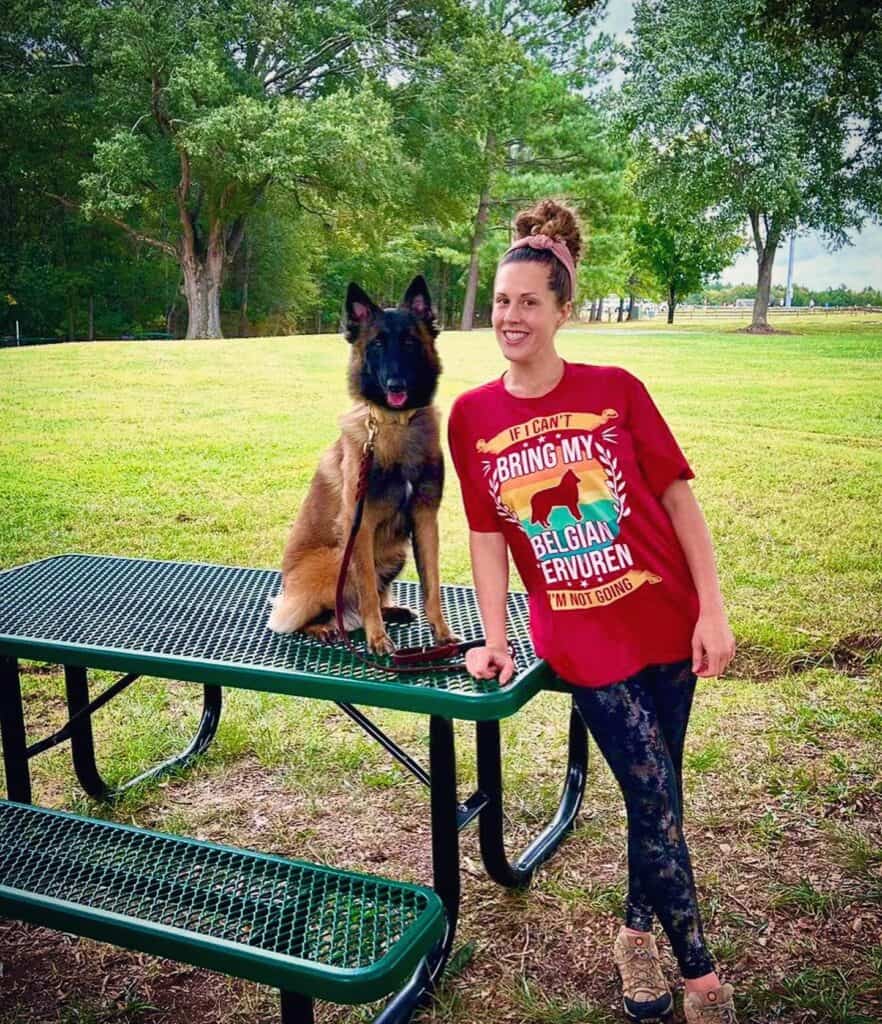
Check out the video below to see – in action – how Halo is preparing for the Fast CAT Invitational!
